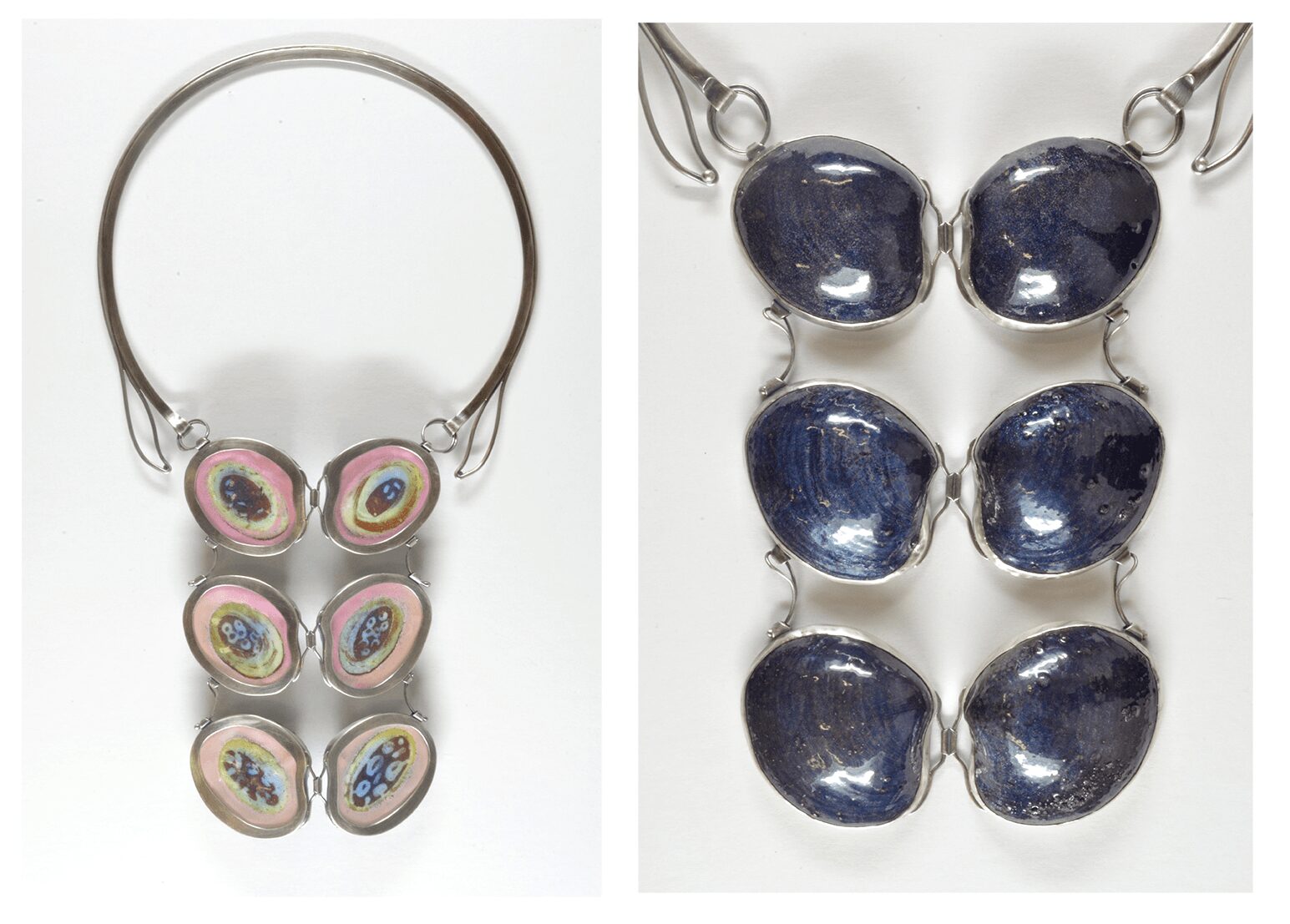
Today we’d like to introduce you to Katy Cassell
Hi Katy, we’d love for you to start by introducing yourself.
I was introduced to art of enameling, fusing glass to metal, as an undergraduate student at the Cleveland Institute of Art in Ohio. I fell in love with the medium, and all my ideas were imagined with it in mind. From there, I married a fellow metalsmith artist, Tim Cassell, and we built studios in our first house together. I went on to earn my Master’s of Fine Arts degree from Kent State University, in Ohio, and began teaching as an adjunct professor of art all throughout northeast Ohio. At an enameling conference, I met Greg Flint, an enamel artist from Greenville, SC. We admired each other’s artwork, traded art, and kept in touch after the conference. When the metals and enameling teaching job opened up at the Fine Arts Center, a pre-professional arts magnet high school in Greenville, Greg suggested I apply, which I did, and I was offered the job! So, in 2007, Tim and I and our baby daughter relocated to the beautiful Upstate.
We all face challenges, but looking back would you describe it as a relatively smooth road?
I love to explore new areas, so it’s been exciting to learn about Southern culture, art, and cuisine. For instance, how did I ever live without shrimp and grits before? Also, the landscapes here in South Carolina are so different from where I grew up, in the farm fields of Ohio, and so my artwork has responded to the change in exciting ways. I’ve always been interested in discovering new directions. However, my children’s grandparents live 8 and 10 hours away, and that is something that strains my heart. And of course, juggling full-time teaching, having a prolific art practice, and being a good parent is always a balancing act. Now that my children are teenagers, I have more time to get into the studio.
Can you tell our readers more about what you do and what you think sets you apart from others?
My specialty is in enameling, which is glass fused to metal. Because the media branches out into so many others, and shares techniques with painting, jewelry, glass, and ceramics, I feel like there are ever more roads to explore. New technologies are always being introduced, too, such as laser etching, which I’ve starting using in my new work. I have many different bodies of artwork, with each exploring different techniques and ideas. For instance, in my graduate school work, I explored installation and tile-work. I also had a long-running series of landscapes inspired by the light on Ohio fields in different seasons. For the last 10 years, I’ve focused on a series of sculptural, electroformed, and enameled jewelry, that explored cycles of life and contrasted beauty with decay, which was inspired by my artist residencies at Paris Mountain and Table Rock State Parks. I’ve been invited to teach national workshops that combine electroforming and enameling. When I electroform, I create wax models using molds and sculptural additive and subtractive carving, which I then paint with conductive paint, and plate a “skin” on them using an acid bath saturated with copper ions. It can get pretty technical, but the part I love about it, is that I can create bold, organic shapes out of metal that are lightweight and appropriate for being worn on the body. Because I’ve been teaching metals and jewelry since the late 1990’s, I think I am known as an enthusiast and supporter of these mediums, I’m one who introduces people to them and their potential for artistic expression.
Are there any important lessons you’ve learned that you can share with us?
When I was younger, my artistic practice was very much tied to my ambitions, a yearning for professional “success” and achievement. I wanted this exhibition, that solo show, this grant, that award, this position, and so on. As I’ve gotten older, and living through the pandemic was certainly an influence here, I’ve realized that my desire to make art is more about me being in the studio, in that state of “flow”, listening to music, and really focusing, experimenting, creating. The process has become more important to me as a person living in the world. The process of making art, while it is tied to my identity, is most importantly a way for me to process my emotions, analyze what is going on at this stage of my life and in the wider world, without using words. The words come later, after I’ve had time to interpret what I’ve made. I keep a sketchbook and plan out what I’m going to do loosely in watercolor; I start with an intention. But making the art is like having a conversation, it goes off in unexpected directions. It’s important to embrace the process.
Contact Info:
- Website: https://www.katybergmancassell.com
- Instagram: @KatyCassell
- Facebook: @Katy Bergman Cassell



















